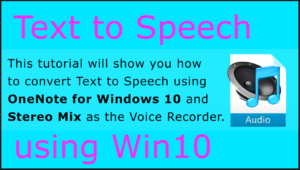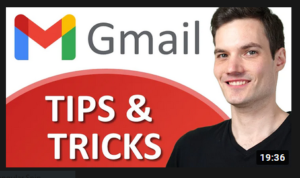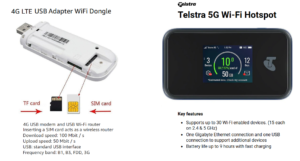East SIG Report – February 2022
30th March 2022
East SIG Report – February 2022
Neil Muller
Host Paul Woolard opened the February meeting, (our first for 2022), again from home via Zoom. The first presentation of the night was George Skarbek presenting his usual Q&A segment.
Q. For some time, I’ve had a problem with Windows 10 not remapping my network drives each time I boot the computer. I’m using a Synology NAS (Network Attached Storage) box. I had a clue that it may be caused by the SMB settings so looked and found I was using SMB version 1. When I changed SMB to version 3 the drive mapping has been rock solid. I have been updating the Synology software so I’m not sure why the old version of SMB wasn’t picked up?
A. SMB version 1 is very old and it’s surprising Synology hasn’t been updating it. Thank you for the feedback. (Refer to Q&A from the August 2021 meeting report for a more detailed explanation)
Q. I have a YouTube problem. I keep a list of URLs of YouTube videos I wish to rewatch later in a Word document. In the past I simply have to click on the URL and the video plays. In the last few days, this technique no longer works and I’m redirected to the YouTube website. The video won’t play and I don’t appear to be able to go anywhere within YouTube. However, if I copy and paste the link into my web browser, the video plays correctly.
When I look at the URL that I clicked on in Word, it differs from that displayed in the browsers address bar. Youtube.com plus extra characters have been added to the original address I have recorded in the Word document. I’ve spent a lot of time trying to correct this without success, so have you got any suggestions that may help me?
A. I bookmark any videos I wish to revisit and that approach works. However, your approach should work using Word.
[Peter Carpenter] If you sign into YouTube there is an option to “Play Later”. This option is stored under your account. As an alternative you could also use the share option and paste the link into Word.
[Reply] I’ve built up a large library of links, so that suggestion would involve a lot of extra work. I’ve also tried links from Word on another computer and that gave the same results. I suspect YouTube has done something as it’s in their interest for users to visit their website to view the ads.
[Richard Bradford] I’ve found when using the Chrome browser, when I put in a URL it seems to direct the URL through a Google search. It could be the browser that is causing the additional characters being added to the address. Possibly use a different browser.
[Peter Carpenter] As a check copy the URL into a blank document (Notepad) and copy the “shared” URL and compare the 2 for any differences.
Q. What advantages are there for signing into YouTube, rather than just using it anonymously? I would prefer to protect my privacy.
A. [Frank Maher] Signing in brings up topics you are interested in and not random topics.
[John Hall] Signing in gives you a list of items you’ve been watching so you can go back and watch unfinished videos later.
Q. I understand that SSD drives have a finite read & write limit.
A. It’s only when you write to a cell in an SSD that shortens its life. The read is infinite.
Following Q&A, Trevor Hudson played a video he’d prepared detailing how to convert “Text to Speech using Win10”. Trevor’s video has been uploaded to YouTube and shows how at no cost you can convert Text to Speech using free tools available in Windows 10. The motivation for the video was to convert written information for his father who is legally blind and unable to read.
The procedure presented uses 2 programs available in Windows 10, “OneNote for Windows 10” and Windows “Voice Recorder”. The advantage over other similar techniques is it’s completely free, doesn’t have any watermarks, has unlimited use, no time limits and has a choice of voices, accents and the ability to adjust the reading speed. (Refer https://tinyurl.com/ycktbf9u).

Figure 1 – YouTube video opening screen “Text to Speech using Win10”
I have divided the video into 3 parts, as not all users will have the same requirements.
- The first part shows the technique to convert written text into speech using “OneNote for Windows 10”. With OneNote open, select from the View menu “Immersive Reader”. To select an Australian voice, click on Reading Preferences (book icon on the top right) where you select the voice, English Australian. From the Sound icon at the bottom centre of screen, the “Voice Speed” and either a male or female voice can be selected. Paste text into OneNote then select the play icon at the bottom centre of the screen to hear the text read. This may be all some users would need.
- If you wish to record speech, the second portion of the video shows how to record the spoken text using Windows “Voice Recorder”. To record what is played in OneNote, the sound input is first set to “Stereo Mix” from the Windows Setting menu. This will enable you to record Windows system sounds. Trevor’s video shows how you change this setting. The first step is to start “Voice Recorder” by clicking on its microphone icon. Next you go back into OneNote, select “Immersive Reader” and click the Play icon, to commence reading of the text. As the text is read, “Voice Recorder” records the speech and can later be saved as a .m4a audio file. Trevor then shows how to trim quiet sections of the audio recording from within “Voice Recorder”.
- The video concludes by showing how Trevor converted the .m4a audio file from “Voice Recorder” to the more common .mp3 format. This was shown using Sony “Vegas Pro” and then the free “Audacity” audio editor.
The second part of Trevor’s presentation was a video he played titled “Top 15 Gmail Tips & Tricks” by Kevin Stratvert. https://tinyurl.com/yc6r8cw7

Figure 2 – YouTube video “Gmail Tips & Tricks”
For those members using Gmail in their browser on the web, this video takes the mystery out of 15 of the multitudes of settings available within Gmail. Rather than detail each of the 15 tips shown in the video, I have only shown the topic headings as it would be too detailed for this report. Members should view the video if topics are of interest to them.
- Undo a send message
- Schedule send messages
- Setting up Templates for sending & replying to emails
- Customise your email address with a . (period) to make them easier for others to remember.
- Customise your email address with a + to make them easier to track
- Turn on a theme in Gmail, including Dark theme
- Add a Reading pane
- Read Gmail messages in offline mode
- Keyboard Shortcuts
- Mute noisy conversations
- Creating & switching between multiple email signatures
- Use Stars to organise messages
- Vacation responder
- Reduce space usage in Gmail
- Insert a file from Google Drive using links to reduce space usage
- Access Gmail in Outlook or other email apps
- Additional inbox types
The final presentation was by Dave Botherway explaining the differences between 5G, 5GHz and how these might affect the NBN. The reason for the topic was that people often get confused as to what 5G refers to, and the implications of 5G for the NBN. This is a subject that Dave is currently investigating, because at his current residence it’s recommended that residents use a 5G “dongle” rather than the NBN. The reason for this is because the cable used for the NBN is also used for the emergency phone system. Currently Dave is trialling both 5G and the NBN, but needs to make a decision about what technology he will use in the future.
What is 5G?
For mobile phones, 5G refers to the 5th generation of mobile technology, with 5G being the latest version following on from 2G, 3G & 4G. 5G connects to a mobile phone from towers, and is an alternative to the NBN for connecting to the internet. Alternatively, a USB modem that plugs into a laptop or computer, a Hot Spot modem router, or Wi-Fi tethering to a mobile phone, can all use the 5G signal for receiving an internet connection. Therefore, a 5G signal coming from a mobile phone tower allows a user to connect to the internet anywhere within the range of the signal. Thus, it is a viable alternative to the NBN for internet traffic.

Figure 3 – USB WiFi Dongle & WiFi Hot Spot
For Wi-Fi, 5G is the localised connection, usually from your modem-router, up to a distance of 50 metres. However, Wi-Fi might also be available from a Hot Spot, such as a library, hotel or restaurants etcetera. Here 5G stands for 5 Gigahertz, which is the frequency of the base link. This being the next improvement up from the previous standard of 2.4 Ghz frequency. Now many modem-routers have both the 2.4 and 5 Ghz frequencies and are referred to as having dual link.
4G & 5G Mobile Performance
The internet speed that can be achieved from both the 4G and 5G mobile signal varies depending on distance to the mobile phone tower used, any signal path obstructions and data traffic volumes.
4G will have speeds varying between 20 to 80+ Mbps, with a Ping time of 10 to 15 milliseconds. It is limited to data usage with a cost comparable to that of the NBN.
5G will have speeds varying between 100 to 400+ Mbps, with a Ping time of 1 to 2 milliseconds. Speed like those from 5G are needed for Real-Time Apps such as driverless cars. Currently 5G has a limited but expanding coverage and requires a 5G compatible device. Dave displayed maps of the 5G coverage around Melbourne in November 2019 and again in February 2022, for both Telstra and Optus. This confirmed the rapid increase in coverage during that 2-year period. 5G compatible devices are currently fairly expensive compared to 4G devices.
The current cost for a 5G Home Broadband plan from Optus claims, pricing comparable with the NBN, unlimited data, guaranteed 50Mb/sec. speed and includes a modem. However, SMS and mobile calls come at an extra cost of $10 per month.

Figure 4 – Telstra & Optus 5G modems
5G Advantages over NBN
- 5G offers performance greater than NBN-100
- 5G does not need physical cabling
- The 5G Wi-Fi modem-router can be moved within a residence or between residences. Once devices are paired, setting up at different locations is easy.
- 5G gives a far better return for providers
- Competition between Telstra, Optus & Vodafone creates competitive pricing compared to the NBN, which is a government monopoly with fixed prices.
- 5G coverage is increasing as seen in coverage maps Dave presented
- The data cost barrier is diminishing.
- 5G is now a viable alternative to NBN for both providers and customers.
Summary
- 2.4 or 5 Mhz Wi-Fi from a modem router requires less need for internal wiring
- 4th & 5th generation (4G & 5G) mobile, requires no additional wiring as the wireless signal originates from mobile towers.
- 4G and 5G offers from the Retail Service Providers (RSPs) are not yet attuned to home phones.
- 5G speeds are better than NBN-100
- NBN is a government owned monopoly, hence margins for providers are low. This is the reason Telstra, Optus & Vodafone are pushing customers to 5G over the NBN.
- Overall 4G and 5G are viable alternative to NBN



Recent Comments